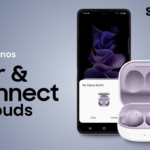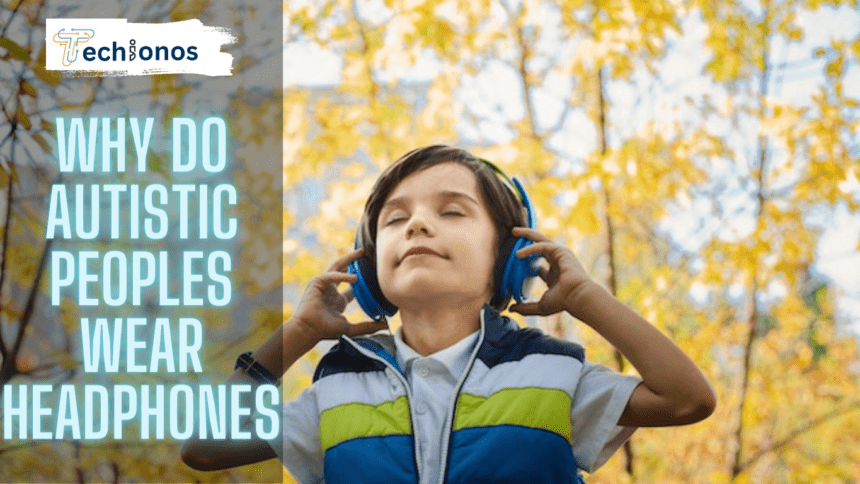Many individuals on the autism spectrum experience sensory processing differences, which can make the world around them feel overwhelmingly intense or distracting.
This is the case with sound, where everyday noises like background chatter, traffic, or electronic beeps are perceived as loud, sudden, or intrusive.
Wearing headphones can help autistic people manage these sensory inputs, creating a buffer between them and the cacophony of daily life.
This allows them to focus more effectively, feel less stressed, and engage more comfortably with their surroundings.
This introductory guide explores the reasons behind this standard practice, offering insights into the challenges faced by people with autism and the simple yet effective strategies they employ to navigate their sensory world.
The Spectrum of Sensory Sensitivity
Sensory Processing and Autism
Sensory processing refers to how the nervous system receives messages from the senses and turns them into appropriate motor and behavioral responses.
This process occurs automatically and efficiently for most people, allowing them to adapt to their environment seamlessly.
However, individuals on the autism spectrum may experience sensory processing differently. Their nervous system might interpret sensory inputs—such as light, sound, touch, and smell—in a more intense, less predictable, or confusing manner.
This variance can lead to sensory sensitivities or sensory-seeking behaviors, where certain stimuli are either overwhelming or sought after to provide comfort or sensory feedback.
Understanding this sensory processing spectrum is crucial to acknowledging the diverse experiences of those with autism and the adaptive strategies, like wearing headphones, that they might use to cope with their sensory world.
Sensory Overload and Its Impact
For individuals with autism, sensory sensitivity can often lead to sensory overload, where the amount or intensity of sensory input exceeds their processing capacity.
In noisy or visually stimulating environments, this can manifest as feelings of stress, anxiety, or even physical discomfort.
The bustling atmosphere of a crowded street, the busy supermarket’s flickering lights, or the school playground’s unpredictable clamor can quickly become overwhelming.
These environments, which might be mildly distracting to neurotypical individuals, can feel chaotic and unbearable for someone with heightened sensory sensitivities.
This sensory overload can hinder their ability to concentrate, communicate, or fully participate in activities, contributing to feelings of isolation or exclusion.
Why Headphones? A Tool for Navigating the World
Blocking Out Overwhelming Noise
Noise-canceling headphones are designed to create a serene auditory environment for the wearer, significantly reducing the impact of external sound.
Using active noise control technology, these headphones can detect and analyze the frequency of incoming noise and then generate a counter-signal to cancel it out.
This technology is particularly beneficial for individuals with autism, who may find even ordinary background noise distressing or distracting.
In essence, noise-cancelling headphones provide a personal bubble of quiet, allowing users to control their sensory inputs more effectively.
This can be crucial in environments that are not easily escapeable, such as public transportation or busy public spaces, where the ability to dampen or eliminate overwhelming noise can help prevent sensory overload, thereby reducing stress and anxiety levels.
Enhancing Focus and Concentration
Reducing auditory distractions is instrumental in helping autistic individuals concentrate more intensely on tasks or engage more fully in conversations.
The cognitive load associated with processing and filtering out irrelevant sounds is also diminished with the elimination or significant reduction of background noise.
This allows for better allocating mental resources to the task, whether completing a work assignment, studying for an exam, or simply enjoying a conversation.
The ability to focus without the constant challenge of ignoring extraneous noise can lead to improved understanding, quicker learning, and a greater capacity to participate in social interactions.
It essentially provides a calmer, more controlled environment, which is especially beneficial for those on the autism spectrum, enabling them to demonstrate their true capabilities and talents without the undue stress of sensory overload.
Creating a Sense of Security
Beyond their practical applications in reducing noise and enhancing concentration, headphones can also serve a deeper psychological purpose for individuals with autism.
They can provide profound emotional comfort and safety, especially in unpredictable or chaotic environments.
For many, wearing headphones is akin to having a personal sanctuary that moves with them — a secure, predictable space in a world that can often feel frighteningly unpredictable.
This sense of security can be incredibly empowering, allowing individuals to venture into situations they might otherwise avoid due to fear of sensory overload.
By controlling their auditory environment, they can reduce their anxiety levels and increase their confidence, knowing they have the tools to manage potential sensory challenges.
This emotional safety net encourages exploration, participation, and a greater degree of independence, enriching the lives of those on the autism spectrum by broadening their horizons and enabling them to engage more fully with the world around them.
Improving Social Situations
Social gatherings, with their unpredictable noise levels and potential for sensory overload, can be intimidating for individuals with autism.
In such environments, headphones are critical for managing sensory input, making these social scenarios more bearable.
By filtering out background noise, conversations become more accessible, and the stress associated with trying to discern relevant sounds from irrelevant ones is significantly reduced.
This controlled auditory environment allows individuals to engage at their own pace and intensity, making social interactions less daunting.
Furthermore, headphones can serve as a visual cue to others, promoting understanding and respect for the wearer’s sensory needs.
Consequently, headphones enhance the auditory environment and foster a more inclusive and accommodating social atmosphere, enabling individuals with autism to participate in social gatherings with greater comfort and confidence.
Guidelines for Respectful Interaction
Interacting with someone who utilizes headphones to manage sensory sensitivity requires empathy, understanding, and patience. Here are some guidelines to ensure respectful and supportive interactions:
- Acknowledge and Respect Personal Space: Understand that using headphones may indicate a need for personal space or a moment of sensory regulation. Approach gently, and if you need to communicate, consider getting the person’s attention with a gentle wave or a light tap on the shoulder if appropriate.
- Use Visual Cues or Text-Based Communication: If verbal communication is challenging due to the headphones, consider using written notes or text messages, especially if the interaction is essential. This can help convey your message clearly without forcing the individual to remove their tool for sensory control.
- Be Patient and Understanding: If someone is slow to respond or seems hesitant to engage, it’s essential to remain patient. They may need extra time to process the interaction or adjust their sensory tool to better engage with you.
- Avoid Judgement: It’s crucial to avoid making judgments about someone’s use of headphones in public. Recognize that this is a strategy for managing sensory input and is a valid form of self-care.
- Educate Others: If you see someone misunderstanding the purpose of headphones as a sensory tool, take the opportunity (if appropriate) to educate them about sensory sensitivities and the importance of such tools for individuals with autism or other sensory processing challenges.
- Ask Before Assisting: Always ask before stepping in if you think someone might need help. Respect their answer, whether they accept assistance or not.
Conclusion
In conclusion, the thoughtful use of headphones to manage sensory sensitivities represents a significant step toward supporting the well-being and independence of individuals with autism.
It enhances their ability to concentrate and participate in social interactions and provides a sense of security and emotional comfort in a world that often presents overwhelming sensory challenges.
By adopting guidelines for respectful interaction with headphone users, society can foster an environment of understanding and accommodation, empowering those with sensory sensitivities to lead more fulfilling lives.
Ultimately, such tools and practices underscore the importance of adaptability and empathy in creating inclusive spaces that respect and support diverse sensory needs.
FAQ Section
Q: Can headphones eliminate sensory overload for individuals with autism?
A: While headphones significantly reduce sensory input, they may not eliminate all forms of sensory overload but can dramatically enhance coping strategies.
Q: Is attempting to communicate with someone wearing headphones disrespectful due to sensory sensitivities?
A: Not inherently, but it is crucial to approach respectfully and be understanding if they are not immediately responsive or prefer not to engage.
Q: How can I tell if someone uses headphones for sensory sensitivity or to listen to music?
A: It may not always be obvious, but if the headphones are used in settings where sensory overload is likely, it may indicate sensory sensitivity management.
Q: Are specific types of headphones recommended for individuals with sensory sensitivities?
A: Noise-cancelling headphones are often recommended as they are designed to reduce ambient noise and help manage sensory input effectively.
Q: Can using headphones too frequently cause social isolation for individuals with autism?
A: If not managed carefully, reliance on headphones could impact social interactions, but with proper support and strategies, they can be a valuable tool for engagement.










